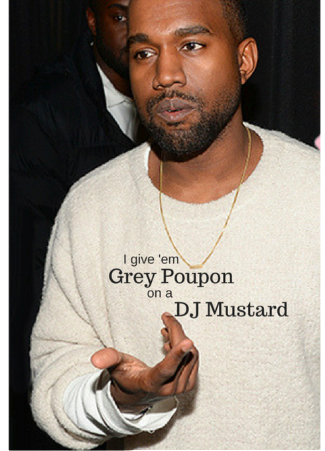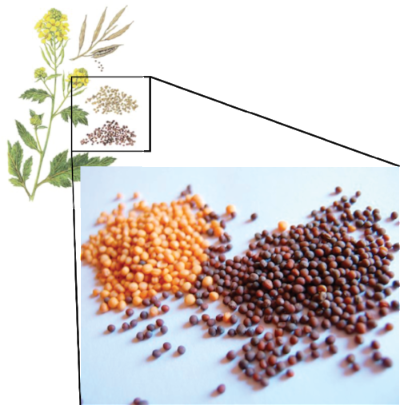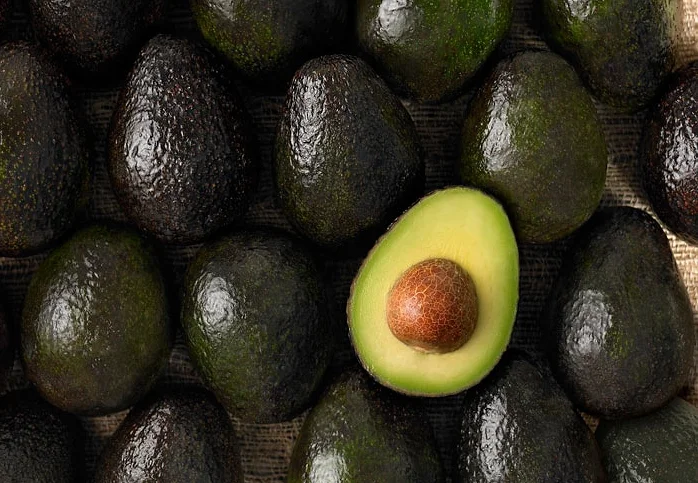Your Mustard Must-Know
Your Mustard Must-Know
Mustard is one of those things that when you like it, it you tend to really love it. Americans luuurve it—we have a museum dedicated to it, and 71% of Americans who eat hot dogs prefer mustard on their dog.Whether you're a lover or a hater, we're here to give you THE mustard must-read of your summer. Show us that love & hate via social media! Info below ↘️
The Current Pickle
The mustard aisle seems straightforward. For a cookout, what’s more American than French’s, right? And if we want to get fancy and French—or find our inner rap star—break out the Grey Poupon!
Hold up. What if we told you that the classic American ballpark staple French’s is owned by the British company Reckitt Benckiser, Grey Poupon is produced in the states by Kraft, and the other Frenchy-Frenchipants mustard, Maille, is actually owned by Dutch-British Unilever?!
Mustard is highly unregulated, and it’s hard to tell what’s real anymore. It’s like mustard Westworld up in here!
So how’s a mustard-loving consumer to navigate this mustard maze?
Next, find comfort with recent news that American-owned McCormick just announced plans to buy French’s, so you can go back to feeling super American using French’s on your next dog (check out our Hot Dog issue for help with that pickle!). 🇺🇸
But first…
What’s the Dillio with All the Different Mustards? (And for gosh sakes, which is the best?!)
The variety of mustards on supermarket shelves is staggering, but it all comes down to one plant and the three types of seeds it produces: white (also referred to as yellow because it’s light yellow in color), brown, and black.
Most mustard is made with white or brown mustard seeds (both pictured above), or a mix of the two. These two also happen to be stars in spice blends for—you know it—pickles! Black seeds are rarely used for mustard, but they’re common in Indian cooking.
To see how ridiculously easy mustard is to make, try eating a mustard seed by itself.
Prepared mustard in a jar = whole or ground mustard seeds + liquid (usually water + acid, like vinegar or wine).
SUPER. SIMPLE.
And healthy! Mustards are generally low-calorie, and do our bodies good with health benefits like reduced inflammation, cell regeneration, and increased energy.
But beware sweet and creamy mustards, which add in calories via sugars, oil, and eggs. Also, avoid cellulose, which is a cheap filler made from wood pulp. ☹️ In general when you’re looking at labels, simplicity is best and any unrecognizable ingredients should be treated with skepticism and given serious side-eye. 👀
Picking a mustard is all about your own personal preference for flavor profile. Check out our quick pickle pick list below:
- Yellow or American ballpark: The classic hot dog condiment gets its bright hue from turmeric, not from the ground white seeds from which it’s made.Most recipes use vinegar and sometimes mild spices so it’s acidic but not spicy hot.
- Plochman’s: French’s may own most of the American market (of yellow ballpark and mustard IN GENERAL), but this brand has won multiple gold medals in mustard competitions. We love a good underdog story! Serious Eats says of Plochmans, “Not offensively vinegary, it offers that sturdy "yellow" flavor that you want on hot dogs and burgers. Plus you have to trust a company that's been around since 1852.”
- Dijon: A silky smooth mustard made with brown seeds and a mild acid--most commonly white wine. Dijon made in Dijon, France must adhere to strict standards, but no such U.S. standards exist.What’s sold here as “Dijon-style” mustard is more mild in flavor than the original.
- Maille: This brand supplied mustard to the courts of 18th century France, Austria, and Hungary, and was the favorite of King Louis XV and Madame de Pompadour.
- Impressive resume, and the flavor still holds up today. Pickle Co-Founder Jenna deems this the best condiment for French fries ("Come at me, haters!” —JZ).
- Get thee to a boutique for fresh AF moutarde from the tap. If the shops are out of range, their mustards “from the pump,” packed in beautiful stoneware crocks, are also available online.
- Deli, Spicy Brown, or American Brown: This deli staple made from brown seeds has more spice and texture, and less tang than yellow mustard.
- Kosciusko: Owned by Plochman’s. Those Plochs know how to make mustard! Match made in meaty heaven for other robustly flavored items like pastrami, roast beef, and sausages.
- Chinese: Hot dry mustard (ground from brown seeds) mixed with water, it packs a serious punch. The mustard that comes with your egg rolls at a Chinese restaurant or in the takeout bag is in this category.
- Colman’s: Take this Brit company’s dry mustard powder and mix with equal parts water to recreate the sinus-clearing mustard from your favorite Chinese spot. Don’t even bother with the takeout packets or store bought jarred varieties. They only contain broken promises.
- German: These mustards range in flavor, texture and heat, but the two most popular styles, both made primarily with the brown seed, are Dusseldorf-style hot and Bavarian-style, which is coarser, milder, and sweeter. Recommended brands are Hengstenberg (Bavarian style) and Alstertor (Dusseldorf style). (Note: the Alstertor really did get strong reviews, but even if it didn’t, how can you argue with that packaging?!)
- Whole- or coarse-grain: What whole-wheat bread is to white bread, this mustard is made from a mix of whole and ground seeds, usually the brown kind.
- Pommery Mustard: This extra-coarse mustard is nutty and tart with a dry, grainy texture and very little heat. Originally produced in a monastery as far back as the 17th century, and while the Pommery family took over manufacturing in 1760, we still feel virtuous eating this.
- Honey: A favorite on chicken nuggets and ham sandwiches, mustards of this ilk have a wide range in both sweetness and spice. Taste around and find one to your liking, or buy one at each end of the spectrum!
- Gulden’s for mildly sweet, mildy spicy.
- Honeycup if you want to up the spice and sweet simultaneously. FYI, brown sugar is the first ingredient of Honeycup, and honey is the fifth—if you’re watching cals and carbs, use in moderation!
The Hot Pickle
The shelf life of mustard is pretty impressive. Dry seeds and powder keep their flavor for 2-3 years stored in an airtight container, in a dark, cool spot in your pantry.
Likewise, jarred mustards, even flavored ones, won't go bad the way milk does, though over time they lose their zing. They last longest in the fridge, on average 1-2 years, and even though big jars seem like a bargain, it pays to buy smaller bottles more frequently for the biggest flavor punch. Just keep tabs so you don’t end up like this:
Beyond being delicious and healthy, mustard also has many applications outside of food. Some types offer biological and insecticidal properties, and the oil from the seeds can be used in the manufacture of biodeisel and other industrial products.
Considering a job switch? Find out what it takes to be a mustard sommelier.
Can't get enough of mustard's love? Grow it and enjoy all kinds of extra mustardy yumminess like a zippy veggie side from the leaves of the plant or a plaster to sooth aches and congestion.
Hungry for more out-of-the-lunchbox recipe ideas? We love Adam Perry Lang’s technique of using French’s to tenderize and adhere spice rubs to grilled or roasted turkey…try it with your fave yellow mustard!














